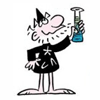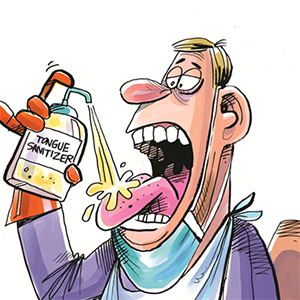Maryland's ranks of unaffiliated voters rising while registered Democrats, Republicans down from 2020
Published in News & Features
BALTIMORE — The party makeup of Maryland’s registered voters is changing, according to a pre-general election snapshot from the State Board of Elections.
Voter registration continues to rise with a number of factors at play, including a growing population and the expansion of same-day voter registration. But amid the state’s overall growth is a changing dynamic for the state’s political parties as fewer voters register as Democrats or Republicans and more choose to register as unaffiliated, reflecting a national trend.
Maryland’s number of registered voters — 4,204,572 as of the advance registration deadline for the 2024 general election, after which prospective voters may register at polling places during early voting or on Election Day — has grown each general presidential election since at least 2000. Voter registration has also increased as a share of Maryland’s adult population. Voters registered for the 2020 general election represented 85.3% of residents who are 18 or older compared with not quite 69% in 2000, based on decennial census counts, which include non-citizens, who aren’t eligible to register.
Over the past two decades. Maryland has made several voter-friendly policy changes, including implementing a pre-registration policy in 2010, which pre-registered 16-year-olds to vote as well as same-day registration, according to Sam Novey, chief strategist at the University of Maryland Center for Democracy and Civic Engagement.
"It's exciting to see that thanks to those policy changes, in addition to the political engagement of Maryland residents, where we are seeing increases in the proportion of eligible Marylanders who are registered," Novey said.
Since 2012, the first general presidential election in which state elections officials counted unaffiliated voters as their own category, the number and share of Maryland voters choosing to identify as unaffiliated has continued to grow. Going into the Nov. 5 general election, Republicans outnumber unaffiliated voters by fewer than 100,000. Democrats outnumber each group by more than 2-to-1, according to the most recent data, which the board of elections summarized in an Oct. 20 report.
With overall registration numbers growing in the state, the major parties in Maryland are seeing shifts in proportion and size. For general elections in presidential years from 2000 to this year, the share of voters registered as either Democrats or Republicans has decreased. At the close of registration before the 2000 election, 57% of registered voters were registered as Democrats. This year, it's dropped to 52.6%. For the GOP, the decline was 29.7% to 24%.
The share decrease coincided with an increase in voters for each respective party until this election year, where the overall number of registered Democrats and Republicans is lower than the 2020 presidential general election at the close of advance registration.
There are a number of factors for why party registration data changes. One includes an effort mentioned by Novey about automatic registration. The law — passed in 2018 and enacted in 2019 — automatically registers Marylanders who apply to receive or renew their driver's license.
"You're getting, basically, folks who are less interested in politics registered, which we should definitely do," he said. "Those folks are less likely to register with a party because they have less, you know, they're less likely to have a developed sort of partisan identity or political identity of any kind."
Novey also pointed to trends, especially with young people — who , where voters have more discomfort with a partisan identity.
"I think there's just a large chunk of the electorate that is growing more and more wary of politics in general, and that plays out in how they're registering," said Luca Amayo, Maryland Democratic Party spokesman. "So unaffiliated voters, independent voters are going to be a larger share of the electorate for, it looks like for, certainly in the near future of our politics. That is going to be the trend in terms of how the party engages with that."
Across Maryland, every jurisdiction saw an increase in unaffiliated voters between 2020 and 2024 with the biggest increase at 27.4% in Prince George's County.
Meanwhile, only four increased in number of Democrats and 15 for Republicans.
The trends are something the Democratic party is aware of, Amayo said.
"Part of how we do that is we work closely with the DNC to acquire data on potential unregistered voters that will be likely to support Democratic candidates, and we'll be using the time after election to leverage our central committees and the party, the party infrastructure itself, to do more canvassing, more phone banking, and try and get these folks, folks registered," Amayo said.
Reached Monday via email, Adam Wood, executive director of the Maryland Republican Party, declined to comment.
©2024 The Baltimore Sun. Visit at baltimoresun.com. Distributed by Tribune Content Agency, LLC.







Comments